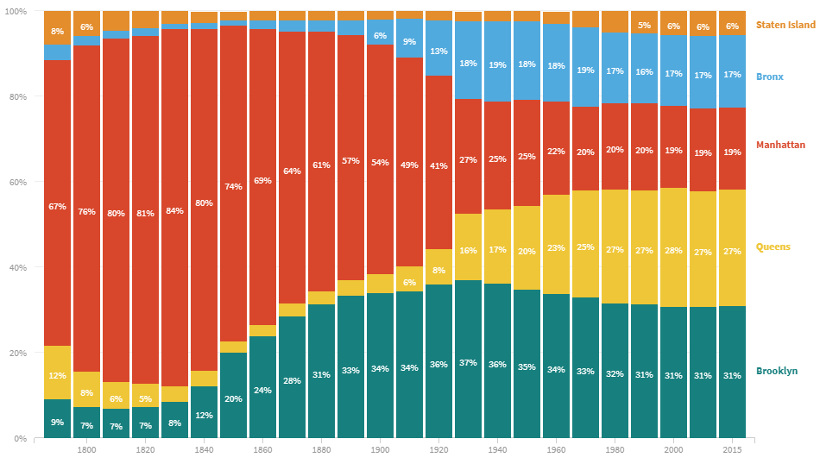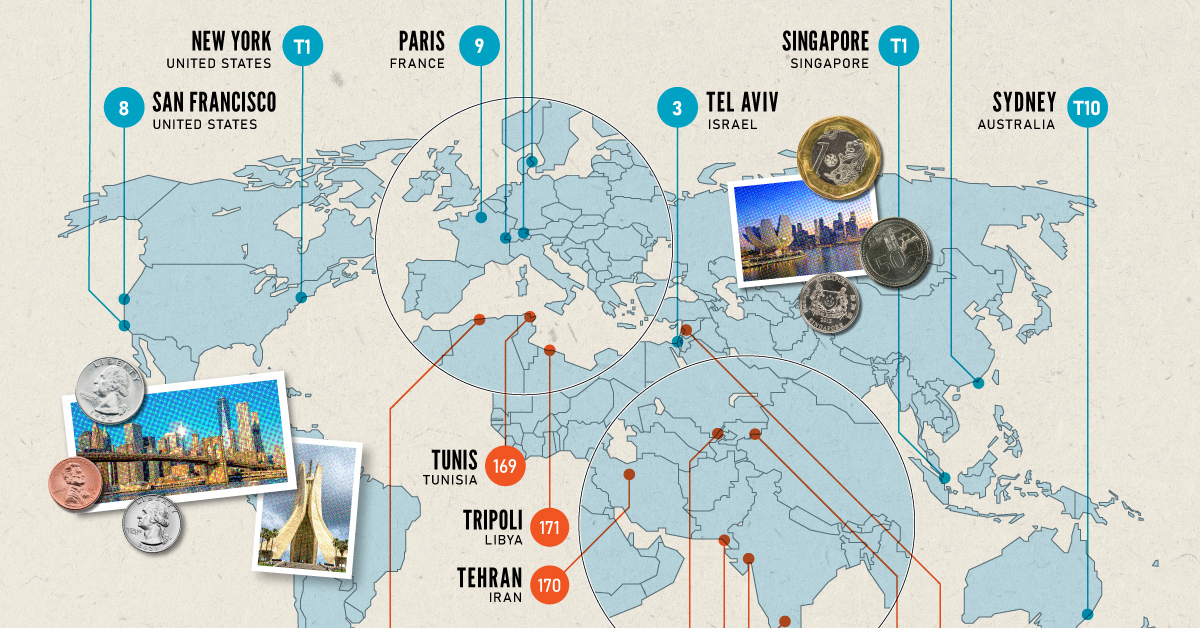There are only two cities that have had the distinction of being named the most populous city in the United States. The first city to hold the title was Philadelphia, as the City of Brotherly Love was estimated to be the biggest city in the country at the time of the signing of the Declaration of Independence. However, by the time of the first U.S. Census in 1790, New York City had surpassed Philadelphia by a few thousand residents – and the Big Apple has stayed the largest in the country ever since.
From Then to Now
Today’s infographic comes to us from Liberty Cruise, and it ranks the 10 most populous cities in the United States for every decade since 1790. To start, let’s take a look at what the list looked just after the first U.S. Census in 1790: It’s pretty surreal to think that some of the biggest cities in the late 18th century hosted no more than 6,000 residents. It also may be a surprise to many that Rhode Island – a state that ranks 50th in size and 44th in population today – held two of the largest towns in the nation at the time: Newport and Providence.
The Modern List
Jump forward over 200 years, and New York City has not lost its top spot. It helped that NYC was able to absorb Brooklyn – one of the country’s other largest cities – into its boundaries in 1898. Other major cities saw similar merges happen over the years, with Philadelphia absorbing Northern Liberties Township, for example. Here is a list of the most populous U.S. cities in 2017 (est.): In contrast to the NYC of today, the 1790 population looks more like a Long Island suburb. This rapid urbanization is mainly thanks to Industrial Revolution, which triggered a massive migration to cities, allowing New York to grow 26,000% in total population. Here’s how the population distribution of New York City’s five boroughs has changed over time:
Interested in learning more about the country’s largest cities? See the electrifying pulse of a Manhattan workday or view a 3d map that shows how much U.S. metro areas contribute to economic growth. on Cities become “expensive” due to a variety of factors such as high demand for housing, a concentration of high-paying businesses and industries, and a high standard of living. Additionally, factors such as taxes, transportation costs, and availability of goods and services can also contribute to the overall cost of living in global cities. The infographic above uses data from EIU to rank the world most and least expensive cities to live in. To make the list, the EIU examines 400+ prices for over 200 products and services in 172 cities, surveying a variety of businesses to track price fluctuations over the last year.
Inflation + Strong Currency = Expensive Cities
If you live in a city where many residents find it challenging to put a roof over their heads, food on their plates, and make ends meet, you live in an expensive city. But if this inflation is compounded with a strong national currency, you may live in one of the world’s most expensive cities. Singapore and New York City tied for the first rank amongst the world’s most expensive cities in 2022, pushing Israel’s Tel Aviv from the first place in 2021 to the third place in 2022. Both these cities had high inflation and a strong currency. Surprisingly, this is the Big Apple’s first time atop the ranking. The city with one of the most expensive real estate markets worldwide, Hong Kong ranked fourth in this list, followed by Los Angeles, which moved up from its ninth rank in 2021.
Poor Economies = Cheaper Cities
Asia continues to dominate the list of the world’s least expensive cities, followed by parts of North Africa and the Middle East. Though affordability sounds good at face value, sitting at the bottom of the ranking isn’t necessarily a coveted position. While the cost of living in some of the cities in these nations is low, it comes at the price of a weak currency, poor economy, and, in many cases, political and economic turmoil. The decade-long conflict in Syria weakened the Syrian pound, led to a spiraling inflation and fuel shortages, and further collapsed its economy. It’s no surprise that its capital city of Damascus has maintained its position as the world’s cheapest city. Tripoli and Tehran, the capitals of Libya and Iran, respectively, follow next on this list, reflecting their weakened economies. Meanwhile, seven cities in Asia with the common denominator of high-income inequality and low wages dominate the list of the world’s cheapest cities. These include three Indian cities, Tashkent in Uzbekistan, Almaty in Kazakhstan, Pakistan’s most populous city of Karachi, and Sri Lankan capital–Colombo.













